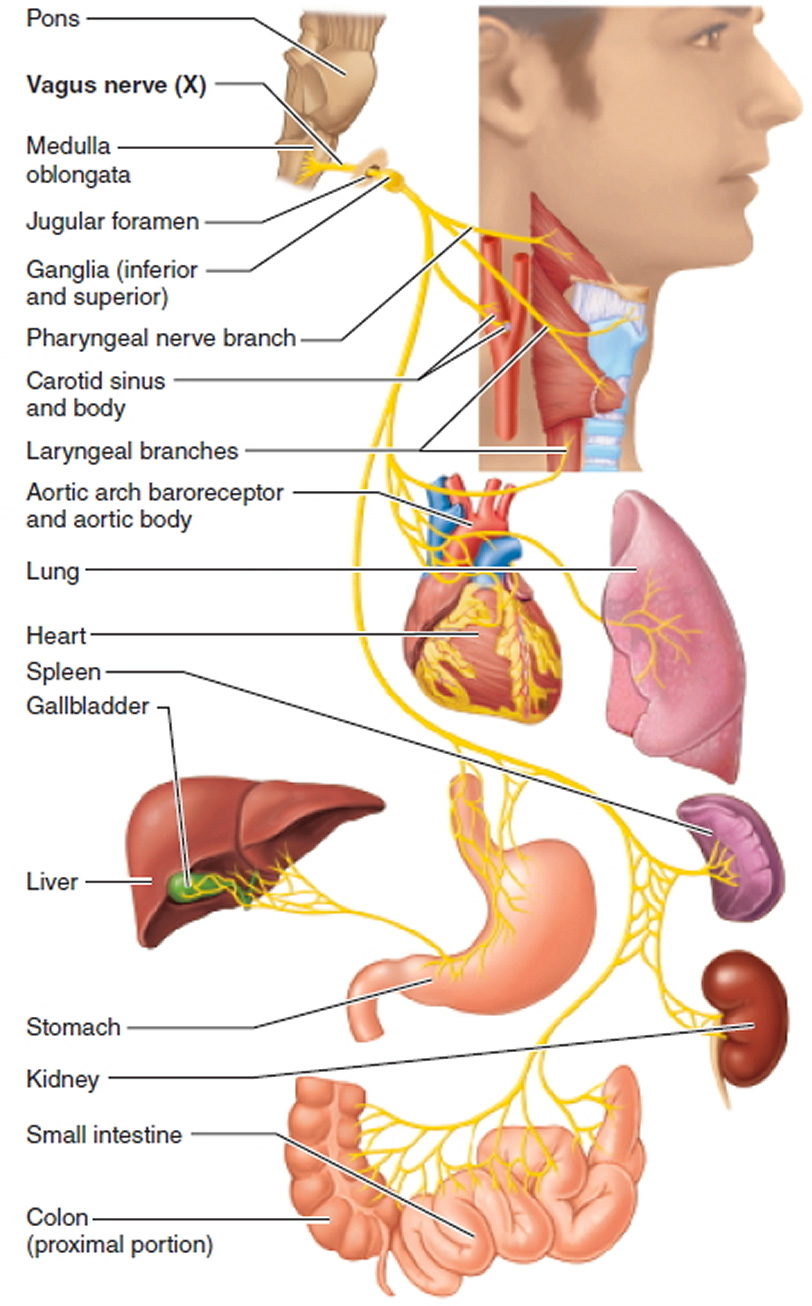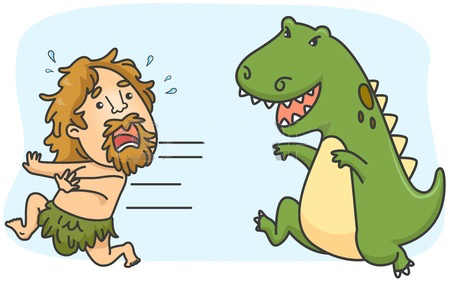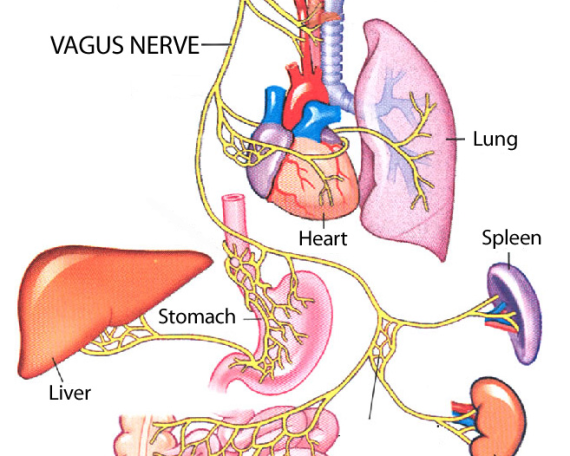 When I started working in the field of bodywork I heard speaking about Polyvagal theory and its importance from many sources. So I tried reading Stephen Porges's book but I found it very academic and complicated. So in the article below, I try to summarize and simplify what I’ve got through reading many articles and resources on this topic.
When I started working in the field of bodywork I heard speaking about Polyvagal theory and its importance from many sources. So I tried reading Stephen Porges's book but I found it very academic and complicated. So in the article below, I try to summarize and simplify what I’ve got through reading many articles and resources on this topic.
This theory helps to understand how the nervous system limits our behavior concerning how safe or in danger we feel.
Before going deep into the Polyvagal theory we need to get a brief view of the fight-or-flight response of our nervous system.
The Fight-or-flight response
 Our ancestors during the Stone Age, when threatened by a dinosaur and their level of stress increased due to this they had two options: fight or flight.
Our ancestors during the Stone Age, when threatened by a dinosaur and their level of stress increased due to this they had two options: fight or flight. Nowadays since the causes of stress and the responses are much different and less physical than that time, like being late for work, a divorce, or a car accident, when the level of stress rises the same physiological reflexes kick in and many times we can’t release it physically.
The Autonomic Nervous System
The autonomic nervous system (ANS), also known as the vegetative or visceral nervous system, is that set of cells and fibers that innervate the internal organs and glands, controlling the so-called vegetative functions, ie those functions that are generally outside the voluntary control, for this reason, it is also called "Involuntary Nervous System". It has the function of regulating the homeostasis of the organism and it operates with autonomous mechanisms, related to peripheral reflexes subjected to central control.
Subdivisions of the ANS
The two divisions of the autonomic nervous system are the sympathetic system associated with the fight-or-flight response and the parasympathetic system that regulates resting and digest.Homeostasis is the balance between the two systems.
It's the ability to live organisms to maintain an internal balance and preserve their characteristics while varying external conditions through self-regulation mechanisms.
Each organ receives connections from both the sympathetic and parasympathetic divisions, eg. for the heart, one causes the heart rate to increase, whereas the other causes the heart rate to decrease.
| Sympathetic system (SNS) | Parasympathetic system (PSNS) |
|---|---|
| Left hemisphere. | Right hemisphere. |
| Sees everything fragmented. | He sees the whole, creates connections. |
| Reactivity: fight / flight. (survival) | Rest and digest. |
| Rational. | Creative. |
| Number skills, Math / scientific skills, Written language, Spoken language, Objectivity, Analytical, Logic, Reasoning. | Work with art and music, creativity, don't think in a Cartesian way, in an intuitive mode. |
| The Vagus nerve is part of this system. |
The vagus nerve
 The vagus nerve is a part of the parasympathetic system, dubbed the rest-and-digest system. Although there are numerous other nerves in this system, this one reaches the majority of the body’s organs. It is the longest cranial nerve.
The vagus nerve is a part of the parasympathetic system, dubbed the rest-and-digest system. Although there are numerous other nerves in this system, this one reaches the majority of the body’s organs. It is the longest cranial nerve.The vagus nerve has two branches:
| Dorsal branch | Ventral branch |
|---|---|
| Regulates organs below the diaphragm. | Affects body functioning above the diaphragm. Controls the muscles of the face, heart, and lungs - parts of the body used to interact with others. |
| From an evolutionary standpoint, this is a much older part of the nervous system. The roots of the dorsal vagal pathway lie with our reptilian ancestors. |
From an evolutionary standpoint, it’s the most recent addition and is unique to mammals. |
| It is instrumental in activating the “shutdown” of the body seen in cases of overwhelming trauma. | This distinctively mammalian system thus fosters what Porges calls “social engagement”. According to Dr. Porges, social engagement, in turn, tends to “down-regulate” (calm) the sympathetic nervous system, and the fight response. |
| When we experience our environment as threatening, we operate from a fight-or-flight response mode. | When we experience our environment as safe, we operate from our social engagement system. |
The Polyvagal theory
Dr. Stephen Porges has expanded our view of the ANS explaining the role of the vagus nerve, through its branches, in regulating the heart, face expressions, abdominal viscera, and breath.
The Polyvagal Theory provides us an understanding of three neural circuits that support different types of behavior:
- social engagement behaviors in safe environments
- fight or flight immobilization behavior
- shutting down (second level of defense)
| Different types of behavior | ||
|---|---|---|
| Safe and social mode. | Mobilized - Fear or Flight mode. | Immobilized mode. |
| Neural circuits that support this behavior | ||
| Parasympathetic dorsal vagal. | Sympathetic. | Parasympathetic ventral vagal. |
| The ventral branch of the vagal nerve affects the body functioning above the diaphragm. | In addition to affecting the heart and lungs, the dorsal branch affects the body functioning below the diaphragm and is involved in digestive issues. | |
| Feelings | ||
| When we feel comfortable and connected our ventral vagal system is online and in charge. | We sense a threat and freeze to scan the surroundings for real danger. | When we feel frozen, numb, or “not here” the dorsal vagal system has taken control. |
| We feel normal happiness, openness, peace, and curiosity about life. Our body feels calm and grounded. |
We feel anxious, afraid, or angry. If positive emotions are present, they usually look forced. |
Emotionally, it feels like dissociation, numbness, dizziness, hopelessness, shame, a sense of feeling trapped, out of the body, disconnected from the world. We may have difficulty getting words out or feel constriction around our throat. |
| Face expression | ||
|
Our face is expressive. We more easily understand and listen to others. |
There may be flashes of facial expressions of fear and anger, with the background of more of a still face. All our senses focus. |
With the decreased facial expression, our eyes may look fixed and spaced out. |
| Neurotransmitters | ||
| Good level of oxytocin. | We release cortisol, epinephrine, and norepinephrine to help us accomplish what we need to—get away, or fight our enemy. | Serotonin, Dopamine, Endorphin. |
| Heart rate | ||
| Heart rate is regulated, our breath is full. |
In this state our heart rate speeds up, our breath is short and shallow. | Slower heart rate, Decreased blood pressure, Slower, deeper respiration. |
| To summarize what happens inside us | ||
| What he wants to empathize with is that social interaction behavior is neural exercise using newer mammalian structures to inhibit very primitive defensive systems. So if we feel that we are in a safe environment will use our face, the intonation of our voice and will negotiate a relationship or maintain safety by doing that. This is what friends and lovers do, and teachers and therapists suppose to do. |
When we are in an environment perceived as threatening we enter in a fear or flight mode. And in that state, we are gonna miss other people's cues. So you are more likely neutral faces as being aggressive. You are more likely to see fearful faces as if they are angry. So you can find difficult relationships. So you won't be able to use people to self-regulate. |
What if we can't go away from danger? What if we are trapped in a car or a bathroom and someone is now going to hurt us. So the third circuit is triggered, and it shuts us down. It's important to understand this to deal with traumas. Because most of the other models previous of Polyvagal Theory speak just about the Fight or Flight system. |
To summarize
What the Polyvagal Theory wants to emphasize in summary is that when our autonomic nervous system is continually engaged in defensive activities, as can happen in traumatic situations or prolonged stress, these can become potentially harmful to our physical and mental health because it is chronically lacking the balance between the different branches of the autonomic nervous system.
When our sympathetic nervous system has kicked into overdrive, and we still can’t escape and feel impending death the dorsal vagal parasympathetic nervous system takes control. It causes freezing or shutdown, as a form of self-preservation.
When the dorsal vagal nerve shuts down the body, it can move us into immobility or dissociation. It takes us out of connection, out of awareness, and into a protective state of collapse. When we feel frozen, numb, or “not here” the dorsal vagal system has taken control.